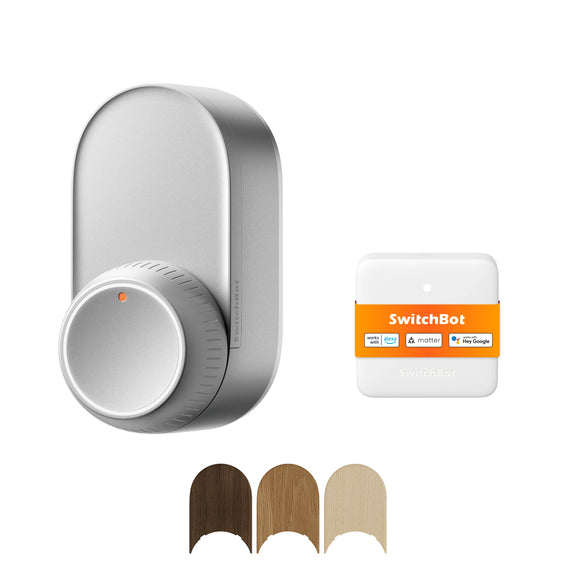Unlocking Convenience: Discover the Magic of Smart Key Deadbolts!
In today's fast-paced world, home security is more important than ever, and smart key deadbolts are becoming increasingly popular among homeowners looking for a blend of convenience and safety. These innovative locks streamline the way we secure our homes, offering a level of ease that traditional locks simply can't match. Imagine never having to fumble with a set of keys again or worrying about losing them. Smart key deadbolts eliminate these concerns and provide users with advanced features that enhance security and usability. In this article, we will explore how smart key deadbolts work, their numerous benefits, and why they might be the perfect addition to your home security strategy.

Understanding Smart Key Deadbolts
Smart key deadbolts operate using a unique technology that sets them apart from conventional locks. At the heart of their operation is a specially designed cylinder that allows for easy rekeying and a higher level of security. Unlike traditional locks, where each key is unique and must be paired with its corresponding lock, smart key deadbolts give homeowners the ability to reprogram the lock to accept a different key. This feature is incredibly useful for anyone who has lost a key or needs to change access without the hassle of replacing the entire lock. The deadbolts come equipped with a durable casing, resistant to tampering, and often feature a built-in alarm system that can alert you to unauthorized access attempts. Additionally, many smart key deadbolts are designed to integrate with home automation systems, allowing for remote locking and unlocking via smartphone apps.
How Smart Key Technology Works
The magic of smart key technology lies in its programming process. When a homeowner first installs a smart key deadbolt, they are given a specific key that is programmed to the lock. To rekey the lock, the user simply inserts the smart key and follows a straightforward procedure, typically involving turning the key and pressing a button on the lock itself. This allows the lock to recognize the new key and effectively “forget” the old one. This easy-to-use feature means that even those who aren't particularly handy can manage their home security without needing to call a locksmith. Personal stories from friends highlight how this feature has saved them time and money; one friend recounted how they were able to rekey their lock after a roommate moved out, ensuring only trusted individuals had access to their home without the added expense of a locksmith.
Benefits of Smart Key Deadbolts
Smart key deadbolts offer a multitude of advantages that make them a compelling choice for homeowners. Firstly, the enhanced security features provide peace of mind. Many models are designed to resist common lock-picking techniques, and the ability to quickly rekey the lock adds an extra layer of protection. Imagine having the ability to instantly change the access to your home after losing a key or after an unwanted guest has gained access. Moreover, these locks are incredibly user-friendly. The hassle of carrying around a bulky keychain is replaced by the simple smart key, which can easily fit in your pocket. The convenience is clear; you can allow access to family, friends, or service personnel without needing to duplicate keys. Additionally, smart key deadbolts often allow for temporary access codes, perfect for when you have guests or maintenance workers coming in while you’re away.
Comparative Security Features
When comparing smart key deadbolts to traditional locks, the differences in security features are striking. Traditional locks rely solely on physical key control, which can be easily compromised if a key is lost or stolen. In contrast, smart key deadbolts provide a more sophisticated level of security. They often come equipped with features that resist lock picking and bumping, which are common methods used by intruders. The ability to rekey the lock yourself means that you can maintain control over who has access to your home, making it significantly harder for unwanted visitors to gain entry. This control over key access not only enhances security but also empowers homeowners to manage their own security efficiently.
Installation and Maintenance
Installing a smart key deadbolt is generally a straightforward process that many homeowners can undertake themselves. Most models come with clear instructions, and all you typically need is a screwdriver and a few minutes of your time. Once installed, regular maintenance is minimal. Keeping the lock clean and ensuring that the keyway is free of debris will help maintain its functionality. Periodically checking the battery life, if applicable, and reprogramming the key as necessary will ensure that your smart key deadbolt continues to provide reliable security. Many users find that these locks require much less upkeep than traditional locking mechanisms, which often suffer from rust or wear over time.
Smart Key Deadbolts: A Modern Security Solution
In summary, smart key deadbolts represent a significant advancement in home security technology, offering unparalleled convenience and enhanced safety features compared to traditional locks. Their ability to be easily rekeyed, coupled with advanced security measures, makes them an attractive option for homeowners looking to boost their security. By eliminating the need for multiple keys and providing quick access management, smart key deadbolts make securing your home simpler than ever. If you’re considering an upgrade to your home security, investing in a smart key deadbolt could be an excellent decision that combines peace of mind with modern convenience.









Comments